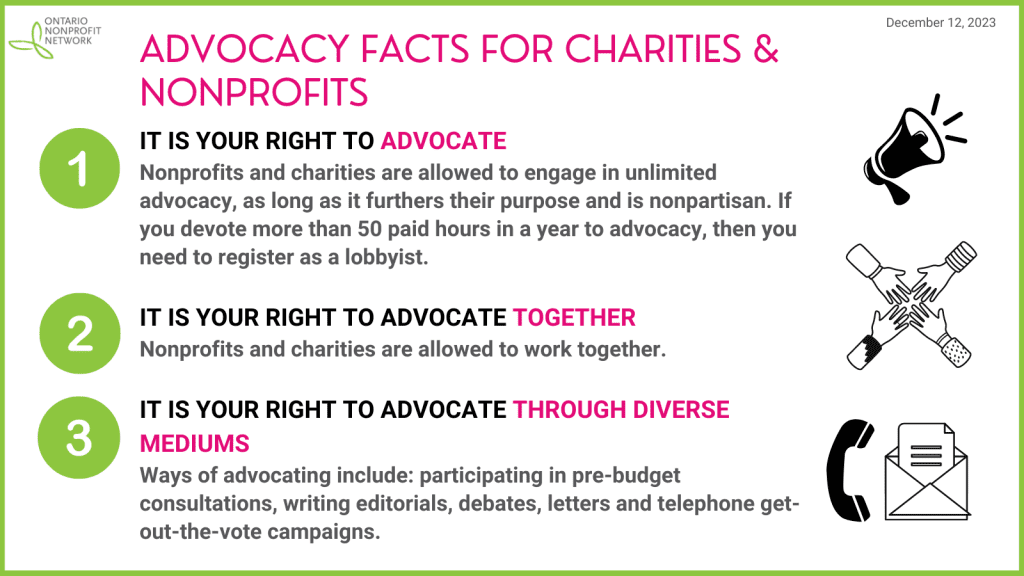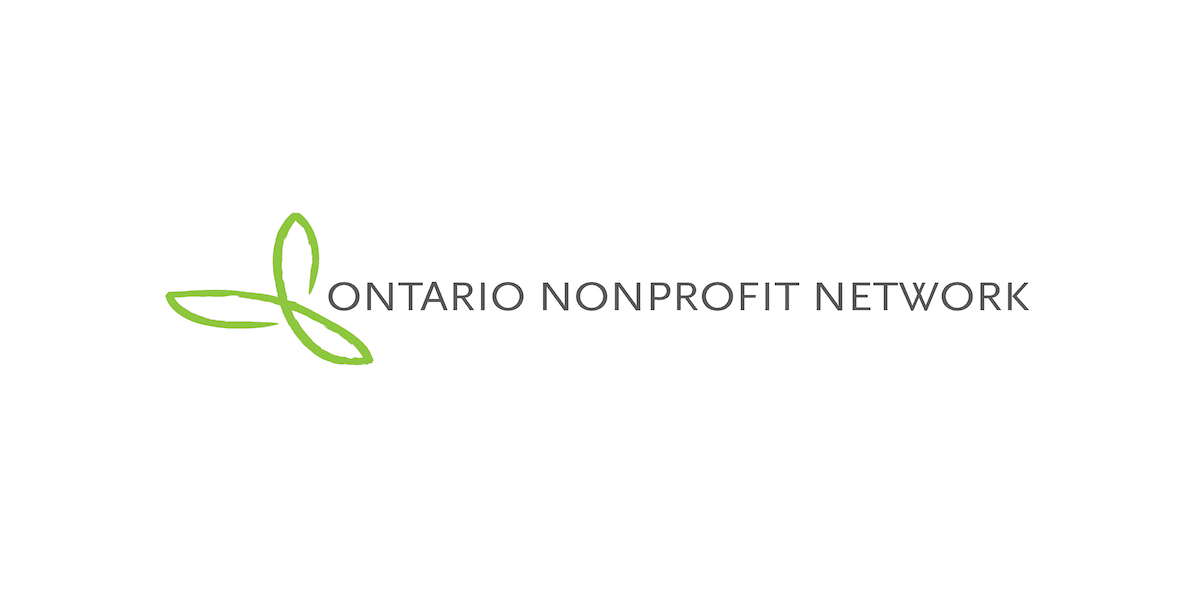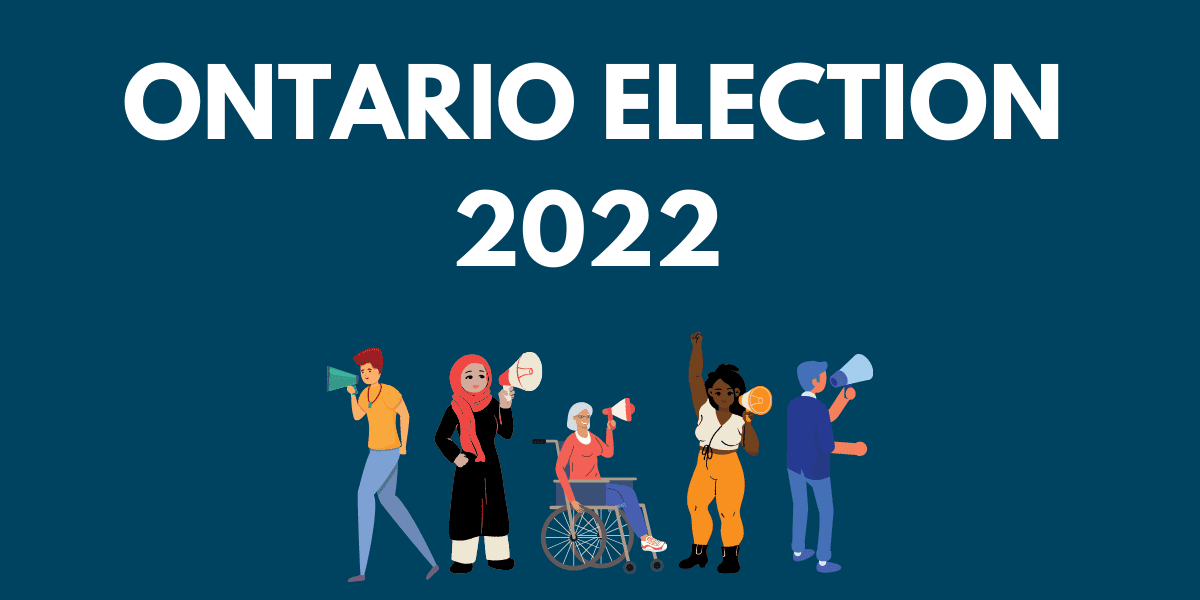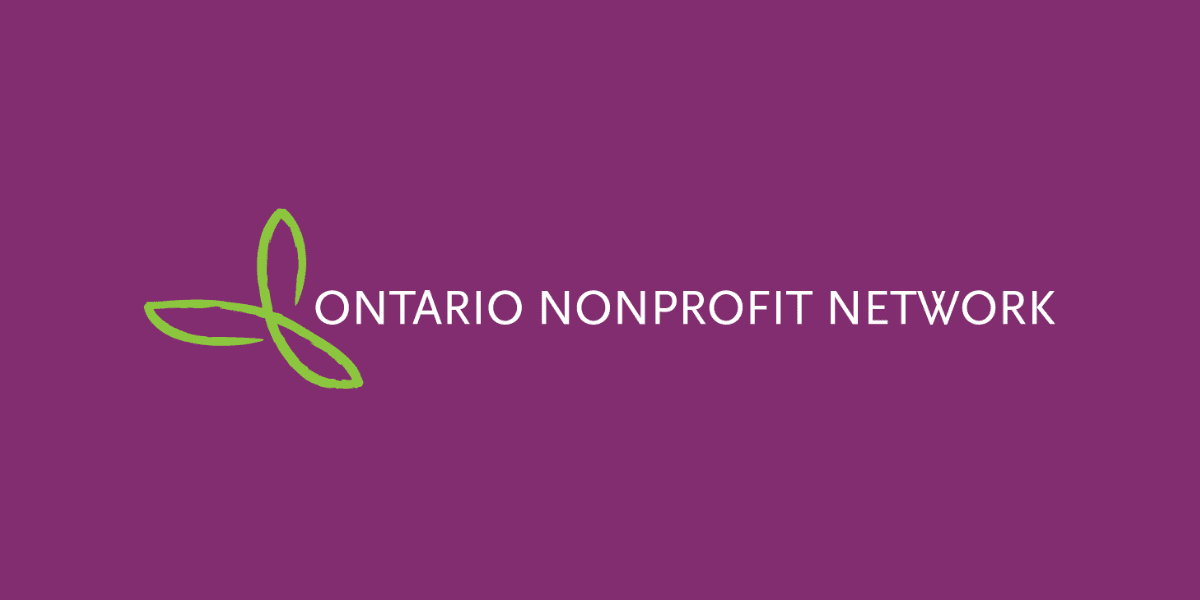An uninspired budget leaves the nonprofit sector under-resourced, again.
Ontario’s 2024 budget – Building a Better Ontario – was tabled in late March 2024, to the tune of $205.7 billion in revenue, $214.5 billion in expenses, $1 billion hived off in reserve, and a $9.8 billion deficit in fiscal. This budget forecasts an overall 1 per cent increase in revenue (vs. 6 per cent last fiscal) and 3 per cent increase in expenses (vs. 4 per cent last fiscal).
While the media is reporting budget 2024 as the largest spending budget in Ontario’s history, the real question nonprofits, and the communities we serve are left with is: how does the government’s visions for a better Ontario include nonprofits?
What is in Ontario’s 2024 budget?
It comes as no surprise that the sitting government continues to signal that their theory of change for Ontario’s recovery from the past five years of crises is:
- Cut revenue sources under the guise of tackling the affordability crisis for Ontarians (e.g. extend tax cuts like the fuel tax, beer and liquor taxes, institute tax credits, and end of license plate fees).
- Spend on building as much physical infrastructure as possible. Infrastructure spending has increased in the double digits year over year over the past five years.
- Invest heavily in the people power required to do building and manufacturing and/or in the recruitment (rather than retention) of struggling sectors.
- Attract corporate manufacturing investments with public tax-payer funded subsidies.
At a time when Ontarians are desperate for relief from the cost-of-living crisis, and eager for more investment in their public services and social infrastructure, this budget is uninspiring and underfunded.
The budget is uninspiring because it is stuck in bringing back a long-gone and no longer relevant “golden age” of manufacturing, rather than propelling Ontarians forward with innovation and creativity through a variety of diverse investments. It is underfunded because it dances around the real issues plaguing Ontarians: starved social infrastructure like public healthcare, education, child care, community-based social services, truly affordable housing, and a lack of community vibrancy with arts and culture. We’re concerned that through the continued starvation of social infrastructure, this budget is moving Ontario closer to the commercialization of services, a reality where Ontarians could be forced to believe that is the only option available to them.
Ministry base funding increases range between 1-3 per cent, barely on par with inflation and population increases
- Attorney General base funding is increasing by 1 per cent.
- Ministry of Children, Community and Social Services base funding is only increasing by 3 per cent this fiscal, the lowest increase over the past three years.
- Ministry of Health base funding is only increasing by 1 per cent, but when Bill 124 settlements are factored in, it’s actually a decrease of 1 per cent.
- Tourism Culture and Sport base funding is increasing by 4 per cent, larger than last year, and by 10 per cent when the Ontario Cultural Media Tax credits are factored in.
- Long-term care funding is increasing by 20 per cent, seeing similar double digit increases since 2021.
- Municipal Affairs and Housing base funding is increasing by only 1 per cent, but when time limited investments and funding and social housing agreements with service managers are factored in, the overall increase is 18 per cent, the largest increase over the last three years.
Compensation settlements due to the repeal of Bill 124 across ministries are built into the projections for closing fiscal 2023 (over $2 billion) and into forecasts for fiscal 2024 (over $3 billion).
Gains for the nonprofit sector in budget 2024
- $200 million for a Community Sport and Recreation Infrastructure Fund to support new and upgraded sport and recreation facilities.
- $155 million in 2024–25 to increase the construction funding subsidy to support the cost of developing or redeveloping long‐term care homes alongside increasing operating funding to help support the financial stability of new and existing long‐term care homes.
- $2 billion over three years to boost and stabilize the home and community care workforce and to support the expansion of home care services, support earlier investments to increase compensation for personal support workers, nurses and other frontline care providers, and to stabilize expanded services.
- $396 million over three years for mental health and addictions services as part of the Roadmap to Wellness: A Plan to Build Ontario’s Mental Health and Addictions System strategy. These investments support the stabilization, improved access, and expansion of existing mental health and addictions services and programs.
- $152 million over the next three years to support individuals facing unstable housing conditions and dealing with mental health and addictions challenges.
- $124M over 3 years for the Addictions Recovery Fund.
- $120 million in 2024–25 for the Ontario Autism Program to enroll 20,000 children and youth in core clinical services.
- $13.5 million over three years to enhance initiatives that support women, children, youth, and others who are at increased risk of violence or exploitation.
- $8.3 million over three years to add another five youth wellness hubs. This expansion aims to connect more communities to youth mental health services, close to home, increasing the total number of hubs to 32.
- Expanding palliative care services in local communities by adding up to 84 new adult beds and 12 pediatric beds, bringing the total to over 750.
- $20 million over four years for the Greenlands Conservation Partnership program that was set to expire this year.
It is imperative that these investments reach our sector quickly and transparently.
Potential opportunities for nonprofits to influence policy and resources
- $3 billion for Ontario Infrastructure Bank now named Building Ontario Fund which is being established as an arm’s-length Crown agency with the goal of using public funds to entice large institutional investors, such as pension funds, to invest in public infrastructure. Among the types of projects the government cites as examples the BOF could invest in are student housing, long-term-care homes, and municipal infrastructure. Can we make it accessible and work for nonprofits wanting to build?
- $1.8 billion over three years, beginning in 2024–25, to help build municipal housing‐enabling infrastructure projects through the $1 billion new Municipal Housing Infrastructure Program and the enhanced $825 million Housing‐Enabling Water Systems Fund – can we make it accessible and work for nonprofits in the housing sector?
- Returning surplus properties into productive use in support of government priorities such as attainable housing and other social infrastructure. Public land should be used for public benefit – can we make the surplus land accessible for nonprofits at better rates, so nonprofits can build deeply affordable housing and much-needed community spaces?
- Consultations to help inform the development of a new rural economic development strategy – can nonprofits be at the forefront of this?
We applaud and celebrate all the nonprofits across Ontario – large and small, urban and rural – that participated in the budget process. You represented your communities and the sector unabashedly, and rang the alarm that the sector is at a tipping point. Even if you are not represented in the budget, we know you are keeping Ontario running, and play a vital role in building a better Ontario.
The best advice we can give: continue building your advocacy muscle
Each year, the budget drop represents a moment in time, where our sector’s advocacy efforts may be recognized through the allocation of funds, and our efforts towards community support and connection can finally be realized. The sector has seen some advances through this budget, but those advances do not match the current needs of Ontarians.
As our sector sees ever-increasing demand for services while navigating through a relentless cost-of-living crisis, and a human resources crisis, this budget may leave many nonprofits feeling apathetic, frustrated, or defeated.
Many of our sector’s asks may not have seen traction yet, but that is not a reflection of your work or your everyday impact. Nonprofits are an invaluable component of Ontario’s communities and economy – we help create connections, provide care, and add to the vibrancy of our province. We value the work of Ontario’s nonprofits, and ONN will continue our integral advocacy with and for our sector.
Advocacy for nonprofits, and the Ontarians we support, happens every day – not just during the formal budget cycle. Alongside financial support, we’re advocating for legislative, policy, program, and implementation changes which continue year-round.
Ways nonprofits can take action
- Join our upcoming budget webinar to learn how you can incorporate advocacy throughout the year.
- Reach out to your MPP, your ministry, and other government contacts to find out more details about the budget, and continue building relationships.
- Communicate the impacts of the budget on your communities, clients, and networks. Also, let us know how this budget is impacting your nonprofit by emailing Ebony.
Reminder to our sector colleagues, do not give up your agency to make change by declaring defeat. Keep doing what you’re doing, and together we will make the value of the nonprofit difference known.











